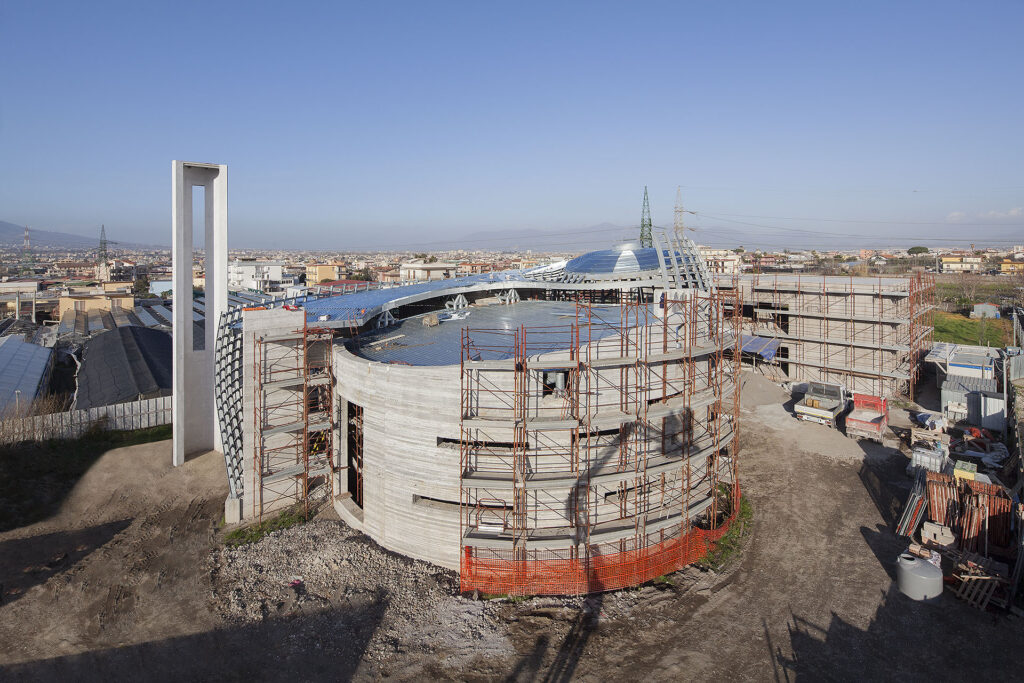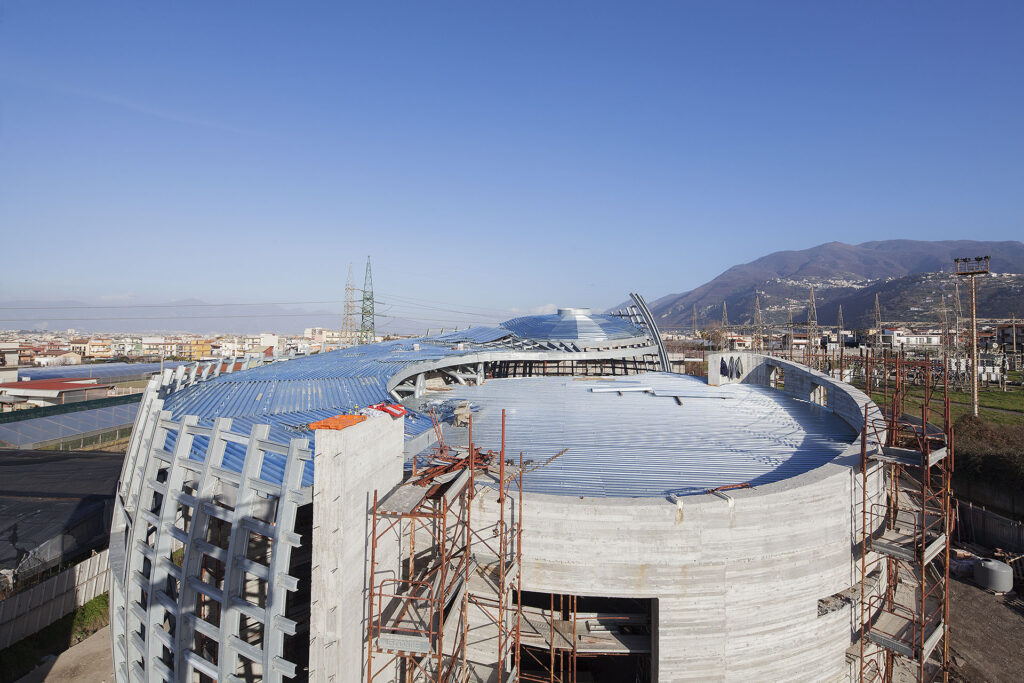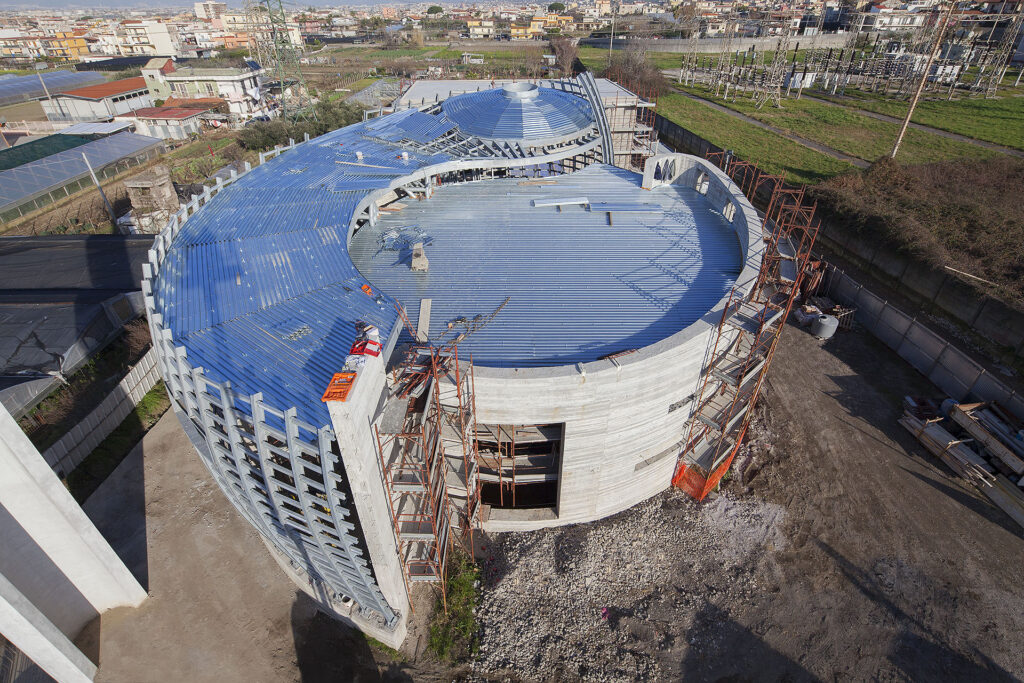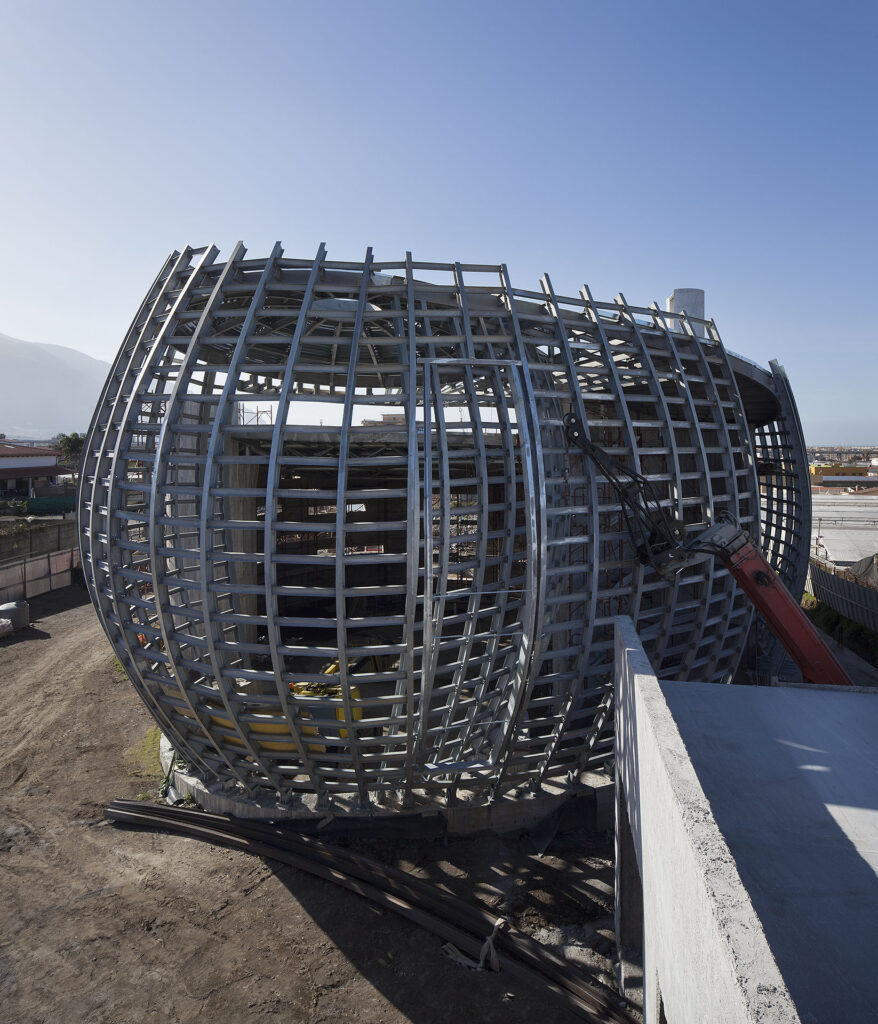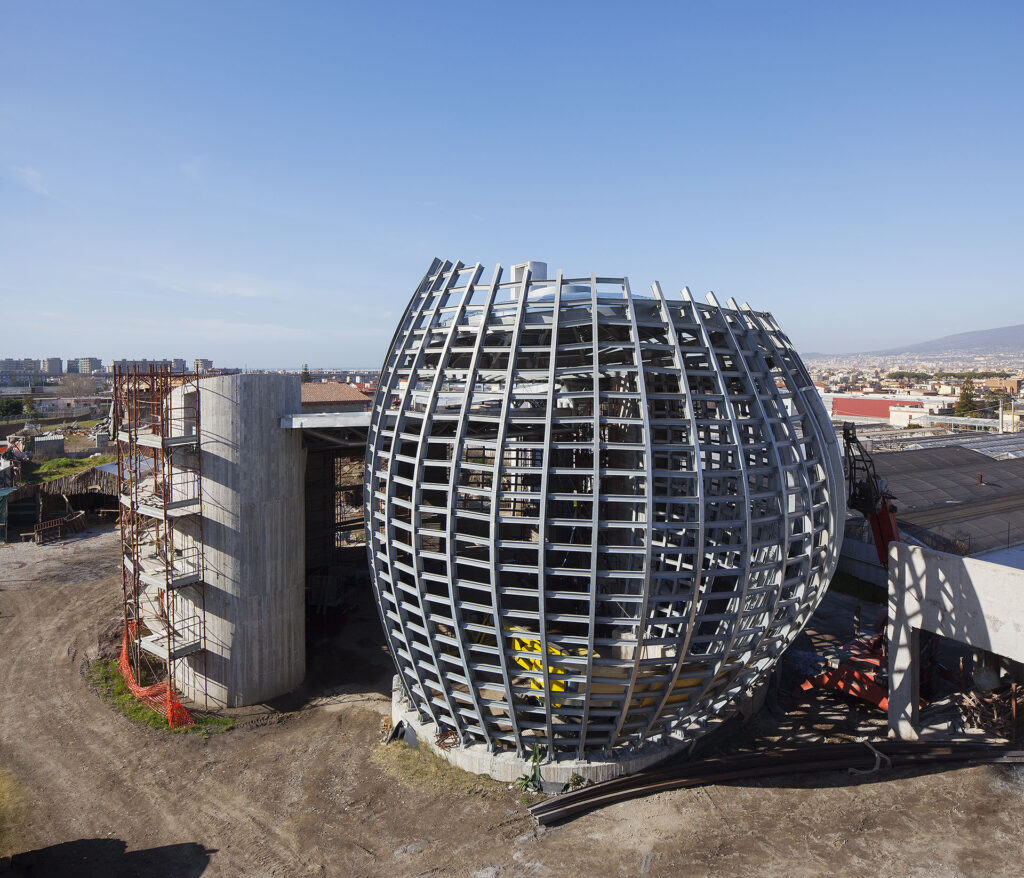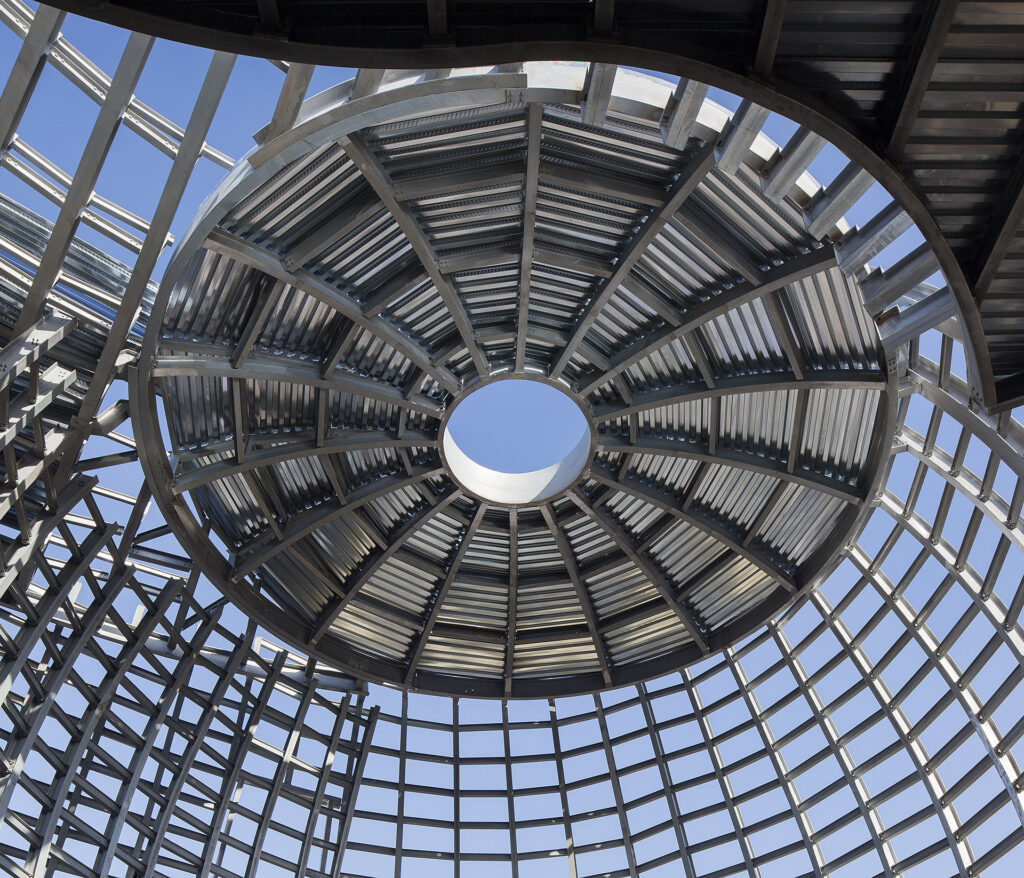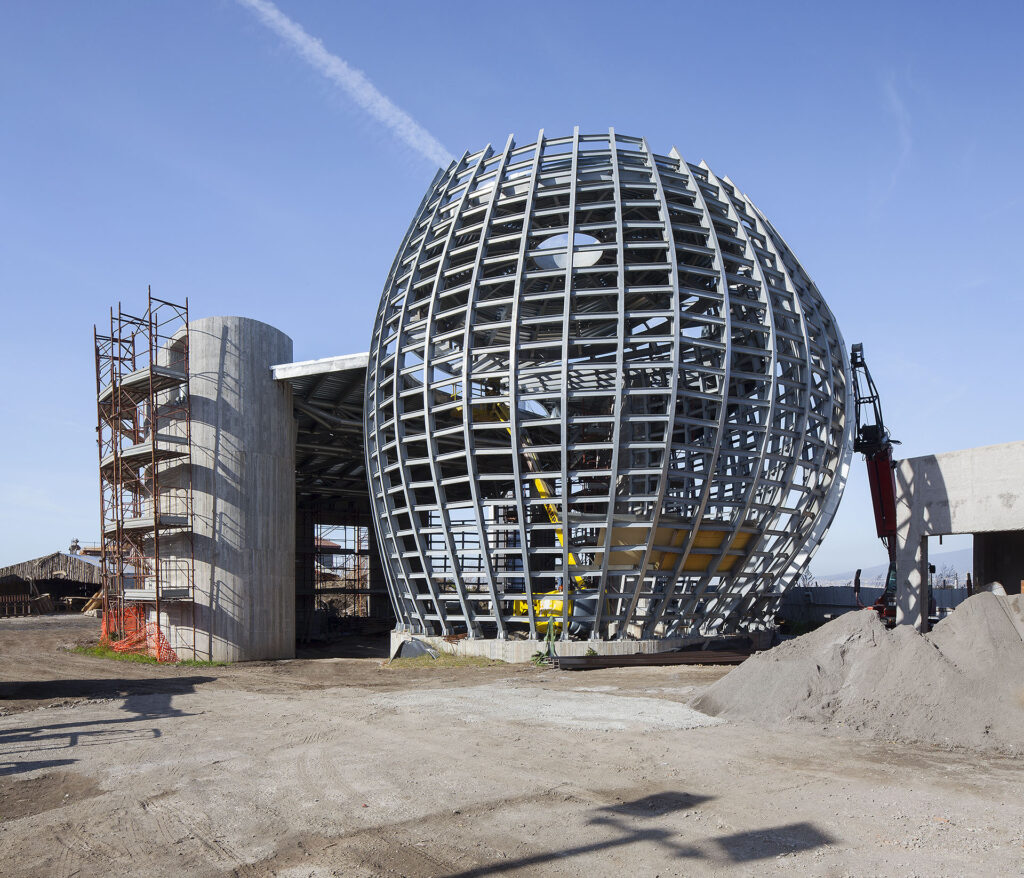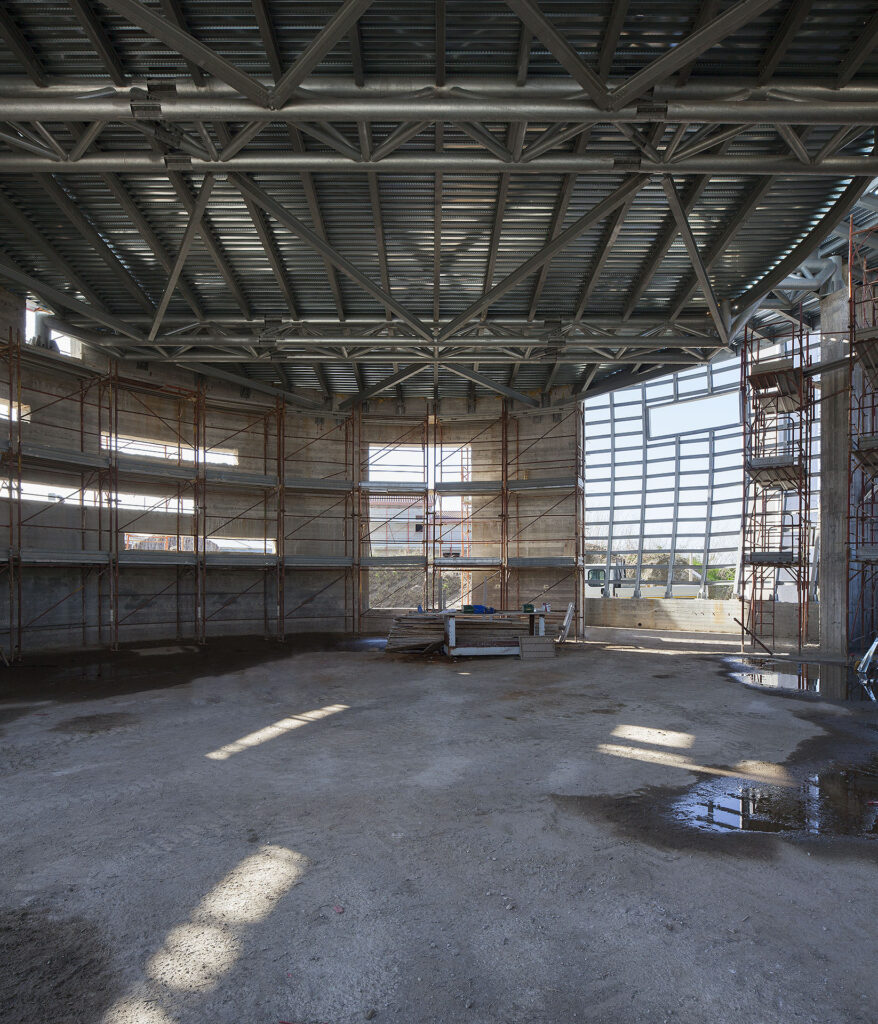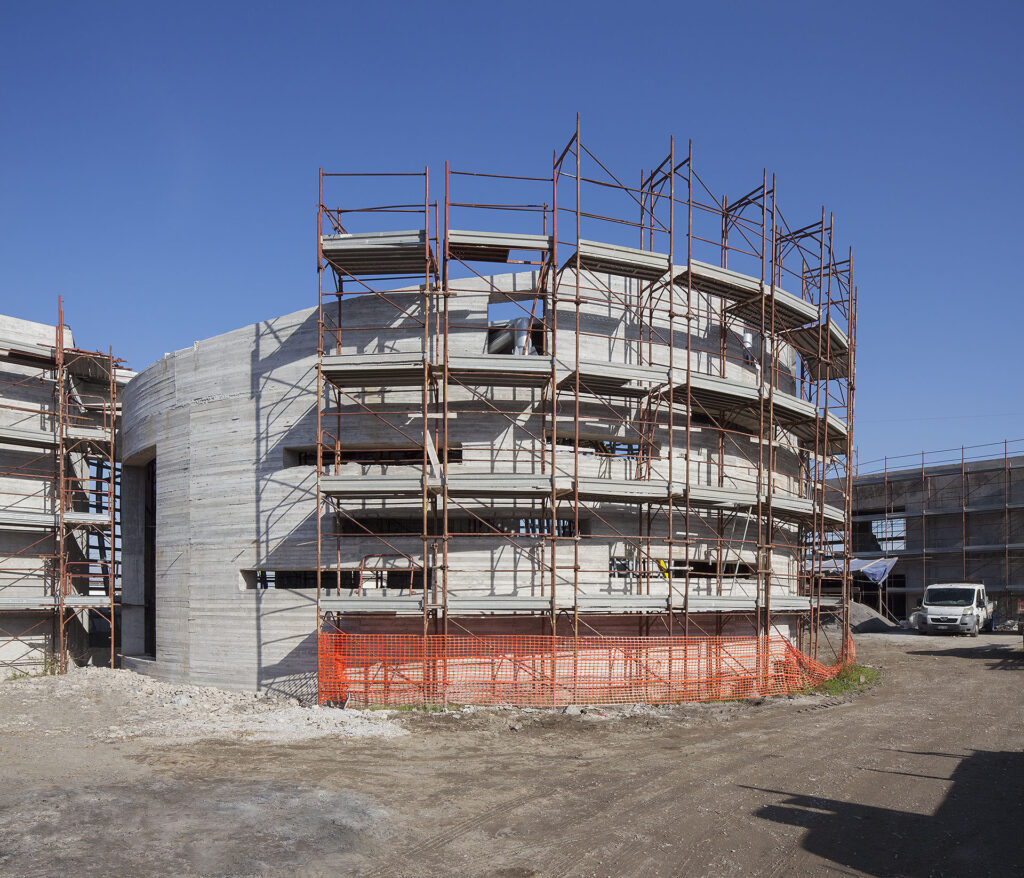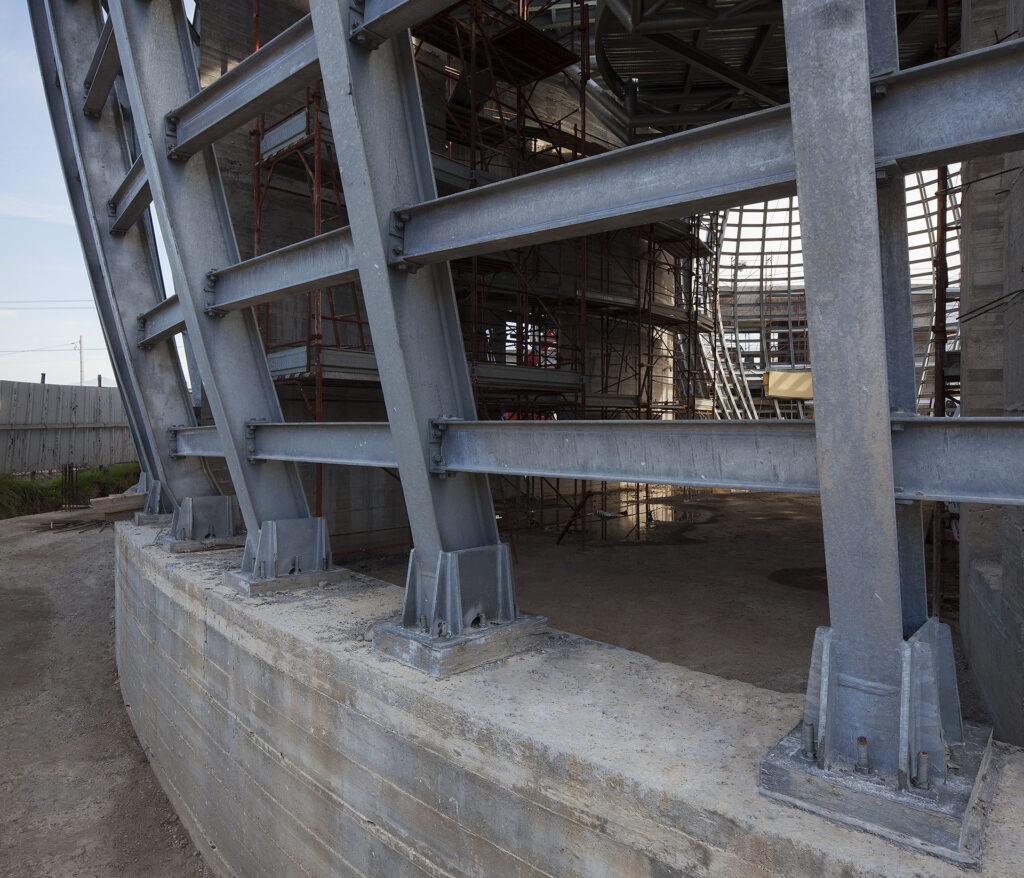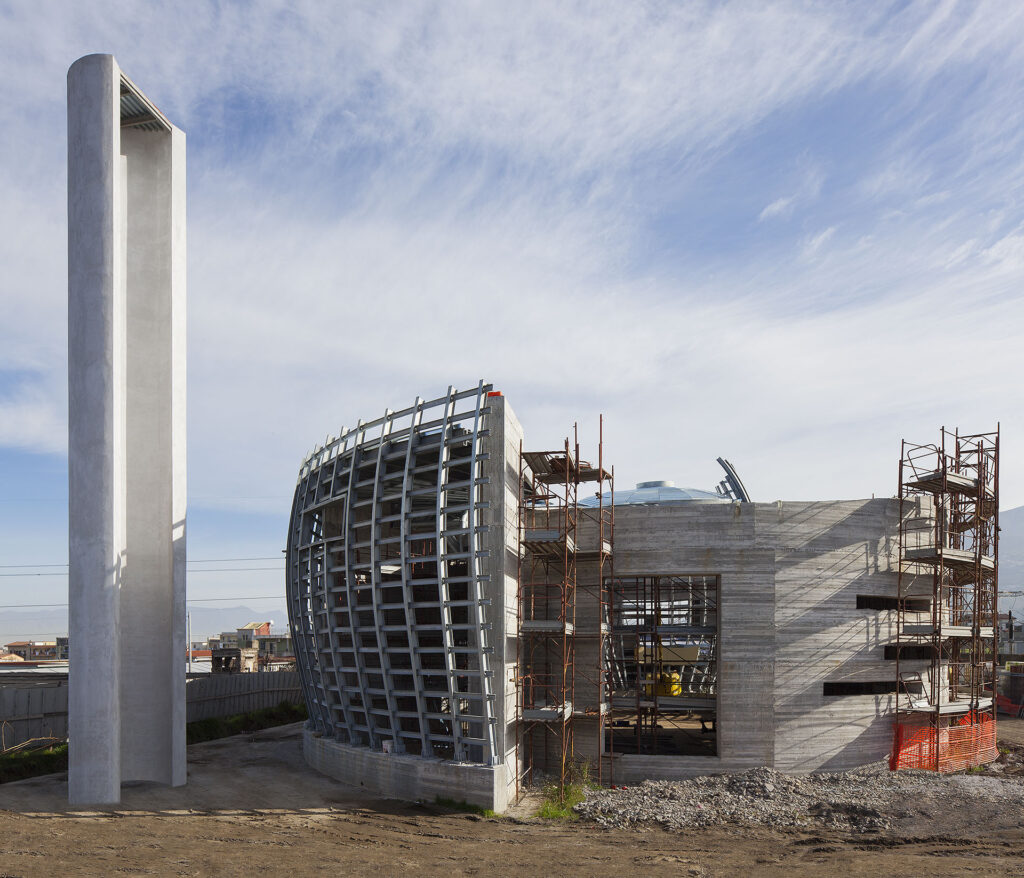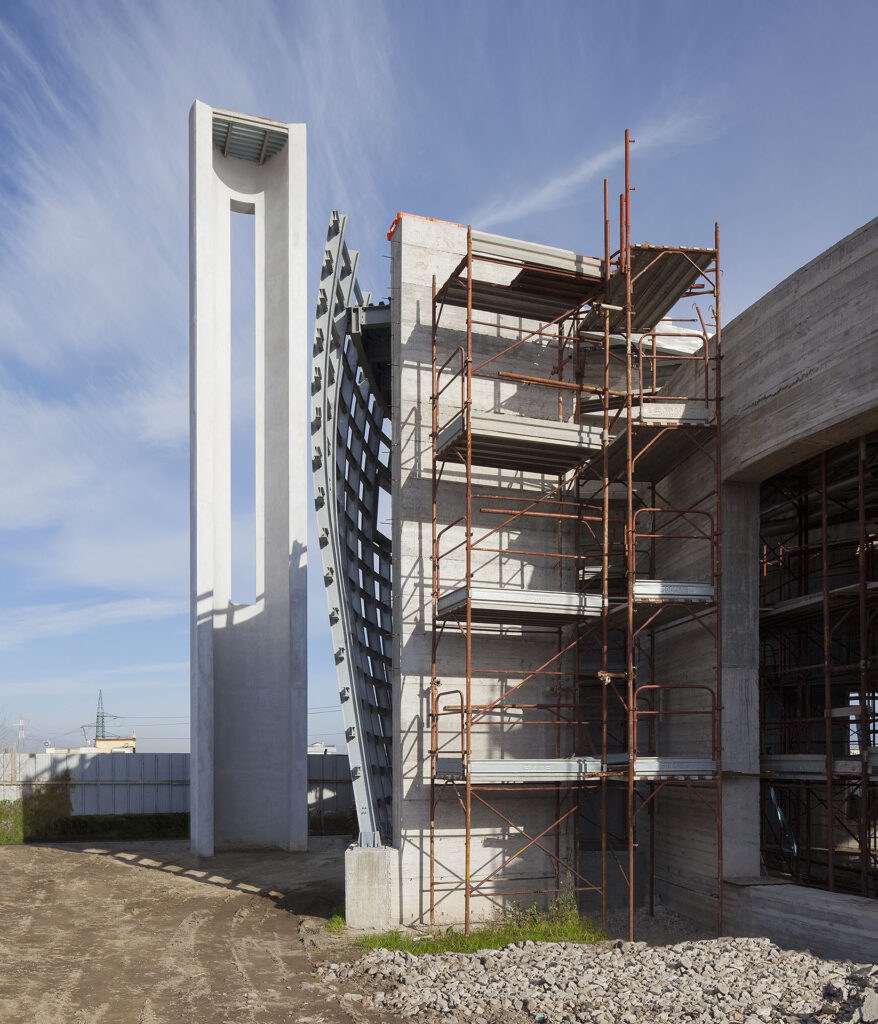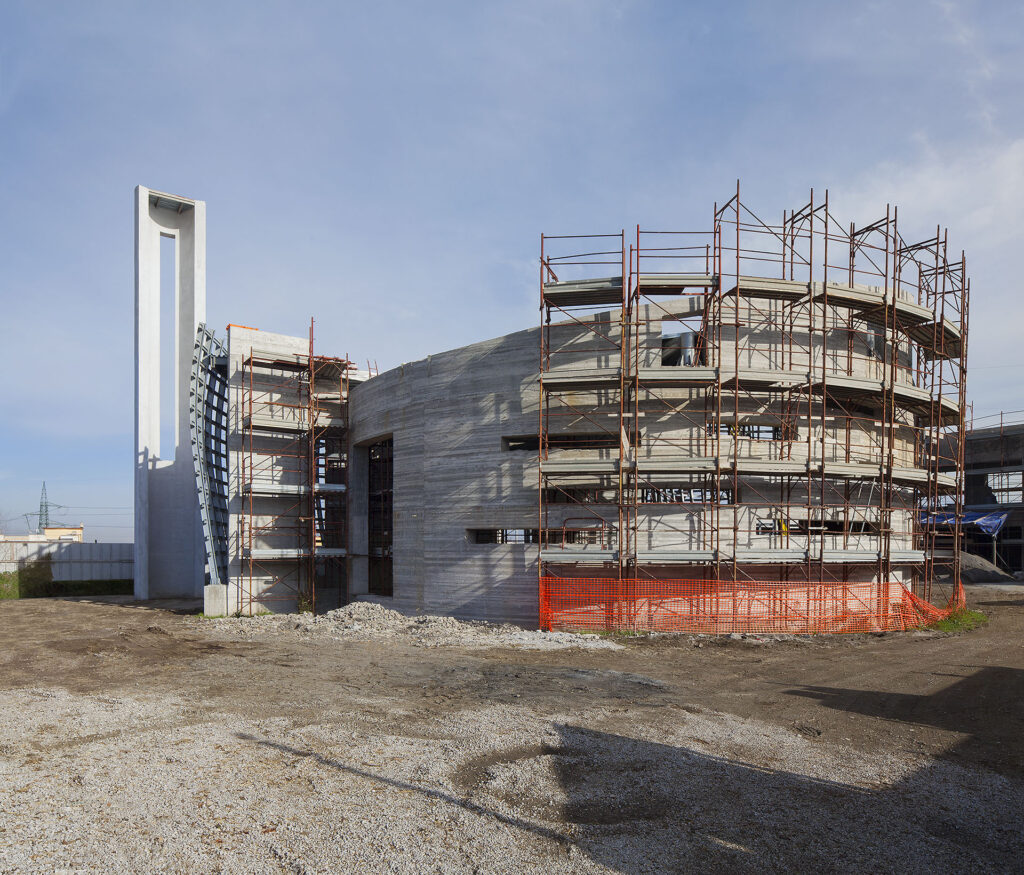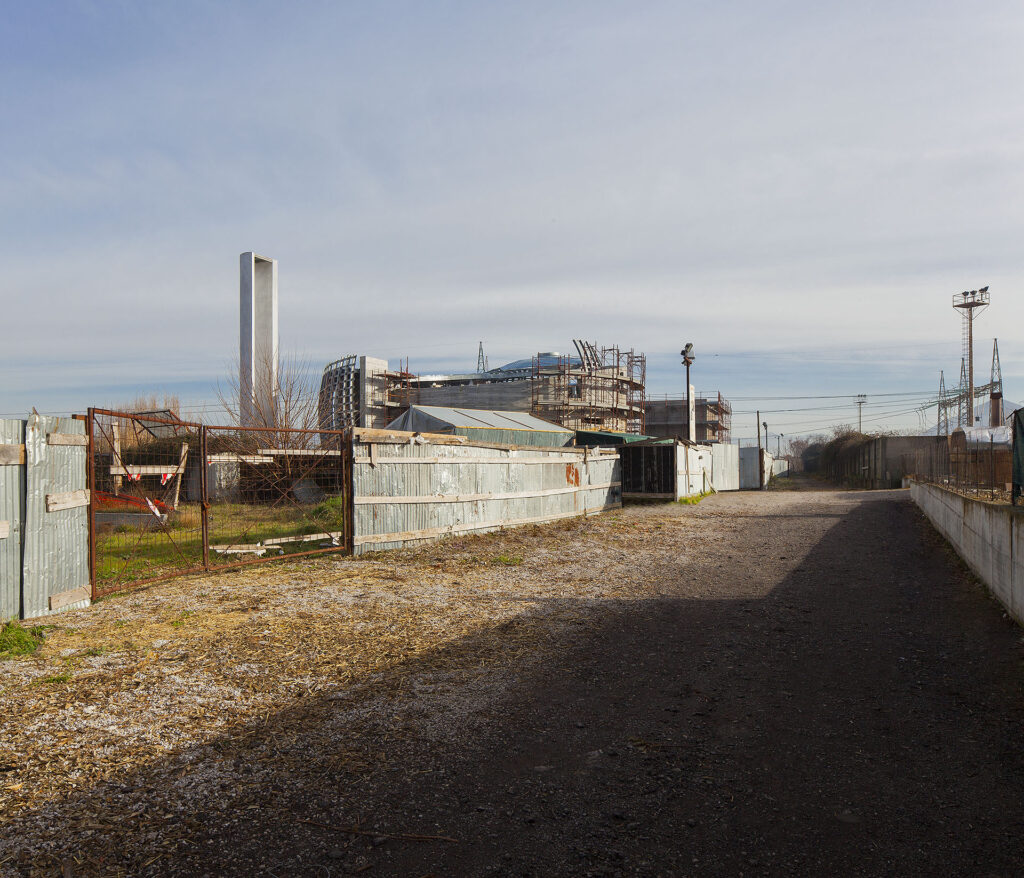The ambitious architectural project, curated by Emilio Vitale and Adriana Pidalà, won the two-phase competition in 2014. This was seen as a great opportunity for local regeneration that the Archdiocese could not miss out on. The architecture of the project developed the strong symbolic references present from the inception of the competition, by describing the embrace between the ‘Mother and Child’ throughout the building. A simple and powerful image in the space presents all the challenges of organic architecture due to complex geometric rules.
Our task was to imagine a structural design that would follow the architectural forms, however complex they might be, in order to return the winning project to the community as it was intended.
Our intervention
All the designers’ assessments, and each of the choices derived from them, err towards a single goal: to ensure that the work is carried out in such a way that is faithful to the project. The body of the Aula liturgica, in particular, has a double curvature for a good part of the perimeter, as well as for part of the roofs. For these elements, it is immediately clear that the choice must fall on steel, integrated with curved reinforced concrete partitions. We broke down the structural design into phases, maintaining a unified and overall vision.
The architectural model is very plastic, but inside, in its walled thicknesses, it will have to contain simplified and point-like structural geometries: the BIM software is this time the intermediary between the architectural modelling and the structural software.
BIM in the service of structural calculations
The BIM model, contained within the architectural model, is the basis for complex structural modelling. The project idea, which was faced by means of pure modelling software, is transferred to BIM and consequently enriched with an informative, as well as a geometric apparatus, which then becomes a structure. The structural model is the result of the structural software importing the BIM model complete with a pre-dimensioning that allows an imputation of the calculation in a way that adheres to the project idea.
The development of the structural calculation starts from the designers’ choice to simplify and standardise the profiles and their often curved development as much as possible, along with the nodes and the relationships between these structural components. The final outcome reflects the premises thanks to a real toing and froing between the two models, the BIM and the structural.
BIM, at the end of the process, made it possible to transmit to the surveyor the geo-referenced coordinates of the individual oriented beams, providing the metalworkers with the CAD of the beams to be scheduled by numerical control, and the assembly dimensions of the various profiles to be mounted on the roof. Such a complex structural calculation without the support of a useful restitution to the construction site could have been insufficient, with very high margins of error with a technology, that of steel, which has no give during assembly.
Object of intervention
New church complex
Performances– Stancanelli Russo Associati
Structural executive design
Assistance to structural works management
Client
Arcidiocesi di Sorrento – Castellammare di Stabia
Year
2015 – in corso di realizzazione
Design technology
Building Information Modeling (BIM)
Photos
Salvatore Gozzo

